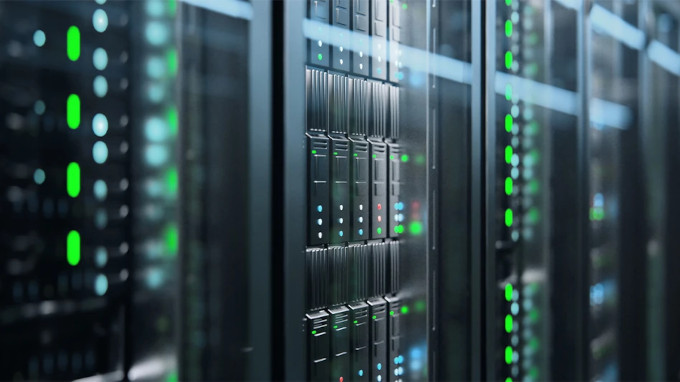Data centers have a unique opportunity to promote large-scale change in sustainable waste management by adopting a circular model for their packaging materials.
Recycling as it’s known today has evolved from an intuitive practice traced as far back as the Bronze Age when people melted down old metals to make new tools into today’s modern environmental practices aimed at reducing waste and reusing materials.
The first recycling programs that focused on environmental concerns emerged almost seven decades ago. In the past several years, many data centers have outgrown traditional recycling and are adopting a newer, alternative solution called circular recycling.
While recycling offers clear and significant benefits as a sustainable waste management solution for most industries, it poses unique and significant challenges in the technology industry, specifically for data centers.
The challenges alone render traditional recycling solutions insufficient for managing a data center’s complex material streams for several reasons.
Material complexity
Data centers frequently use complex packaging to safeguard delicate or sensitive equipment during transport and installation. The packaging often requires mixed materials like foam-lined crates, wooden boxes with metal reinforcements or plastics with adhesive coating. These specialized materials make it difficult and, in some cases, impossible to separate them for recycling.
Furthermore, contamination from adhesives or mixed polymers can render materials non-recyclable, further complicating the recycling process.
For example, if a data center receives servers packed in crates with polystyrene foam and metal components, separating the materials into individual components is both labor-intensive and requires a specialized facility which may not be available in proximity to the data center.
The materials used for data center packaging, like foam and other plastics, also have a limited lifespan and degrade after a few uses; they even can show signs of wear after a single use. The shorter lifespan does not allow longer-term reuse and forces packaging to be discarded after one or two uses.
Environmental concerns
Recycling the sheer amount of material that data centers generate, including metal, plastic and foam, requires a substantial amount of energy which presents its own environmental challenges. The complexity and inefficiency often involved in recycling high volumes of mixed materials can consume more energy than it saves, creating a paradox for environmentally conscious data centers. For example:
- Metals: Recycling metals like aluminum and steel is more energy-efficient compared to producing them from raw materials, but doing so at high volumes demands substantial electricity and emits harmful byproducts.
- Plastics: Sorting, cleaning and melting plastics is energy-intensive and requires specialized equipment and considerable water and electricity.
- Foam: Polystyrene foam requires specialized machinery for compacting and is expensive to transport due to its bulk, further increasing its carbon footprint.
Logistical barriers
Recycling is location dependent, and infrastructure varies by region, creating the following logistical challenges for data centers:
- Facility availability: Data centers in remote locations may lack access to facilities that are capable of recycling specific materials, leaving the data center without an option to recycle and most likely forced to send the material to a landfill instead.
- Transportation costs: The costs and emissions required to transport recyclable materials to facilities that may be better suited to handle large volumes of complex materials makes recycling less sustainable for data centers leaving them to choose to divert excess waste to landfills.
Regulatory compliance
Governed by strict environmental regulations like waste management mandates, carbon reporting and material recovery standards that require proof of progress toward sustainability goals, data centers are feeling the pressure to adopt more sustainable practices.
However, energy costs associated with traditional recycling can hinder progress toward net-zero emissions goals. Noncompliance with regulatory requirements results in fines, reputational damage and even operational restrictions for data centers.
Moreover, traditional recycling practices often are misaligned with regulatory frameworks.
To meet or exceed legal and sustainability expectations, data centers are exploring more innovative approaches such as circular recycling models.
Circular recycling: A solution for the tech industry
Because of the many unique challenges high-volume industries like technology encounter when attempting to recycle at scale, there is a demand for innovative, less resource-intensive approaches that are better suited to managing large volumes of specialized materials.
Circular recycling, a model within a circular economy that prioritizes reducing waste by keeping materials in use for as long as possible, is one potential solution.
Circular recycling positions data centers to reuse raw materials and ensure resources are used to their fullest potential, reimagine materials to create custom packaging solutions that are not only efficient but also recyclable and recapture material and repurpose it to create new products, thereby reducing dependence on raw materials.
Circular recycling also addresses environmental concerns by reducing landfill dependency and diverting high volumes of packaging materials for reuse. It lowers emissions and decreases the reliance of raw materials and traditional, sometimes energy-intensive recycling practices. It also extends material lifespan, minimizes resource consumption and reduces the overall environmental impact of disposal.
There also are operational and financial advantages to circular recycling. Eliminating single-use packaging and disposal fees offers significant cost savings while reusable and customizable packaging streamlines supply chain efficiency and minimizes dependence on limited resources to reduce supply chain disruptions.
Finally, circular recycling supports corporate sustainability goals and environmental, social and governance (ESG) objectives by supporting the compliance requirements that help organizations achieve waste management mandates. Its contribution to carbon reduction plays an important role in achieving net-zero targets and demonstrates environmental leadership and a commitment to sustainability which helps boost brand reputation among stakeholders.
Collaboration in circular recycling
Adopting a circular recycling program not only encourages but also requires supply chain collaboration.
Packaging manufacturers can work with industry partners to design innovative and customized durable, reusable and recyclable packaging solutions; recycling facilities can work with specialized facilities to build partnerships and ensure efficient, effective materials recycling; and stakeholders can foster a closed-loop system in which suppliers, logistics providers and customers work together to meet the unique needs of data centers.
By embracing circular recycling, data centers not only can tackle their waste management challenges but also gain a competitive edge as trailblazers in sustainability.
This innovative, forward-looking approach delivers measurable results and enhances an organization’s value proposition while supporting the global transition to a more sustainable future on a larger scale.
Adopting a circular recycling program
Adopting a circular recycling program may seem like a massive undertaking, but it doesn’t have to be. Breaking it into smaller, more manageable steps can make the process approachable.
- Start small: Make simple changes and rely on straightforward materials like reusable crates or a foam recycling program. Focus on what is easy to implement and materials that are easily integrated into a circular system with minimal operational disruption.
- Invest in custom solutions: Work with packaging manufacturers to build custom, durable, reusable and resource-efficient options using packaging materials that address the data center’s needs and align with the business’s operational requirements and long-term sustainability goals.
- Track measurable results: Plan to measure the program’s success with clearly established metrics, such as landfill diversion rates, downward trends in carbon emissions and cost savings from minimizing single-use packaging and reliance on raw materials.
Regularly report these metrics to demonstrate return on investment and encourage broader industry adoption.
Finally, celebrate and share successes and outcomes to inspire and influence partners, customers and stakeholders.
Data centers have a unique opportunity to trailblaze large-scale change in sustainable waste management.
By adopting a circular recycling model, they can influence environmental impact, meet ambitious ESG targets and pioneer industrywide innovation. Embracing this forward-thinking approach is a chance to lead the tech industry toward a greener, more efficient future.
About the Author: Paul Budsworth is CEO of Specialized Packaging Group (SPG), one of North America’s largest independent protective packaging providers. He previously held senior leadership roles at Diversey Care, Sealed Air, and Unilever.

